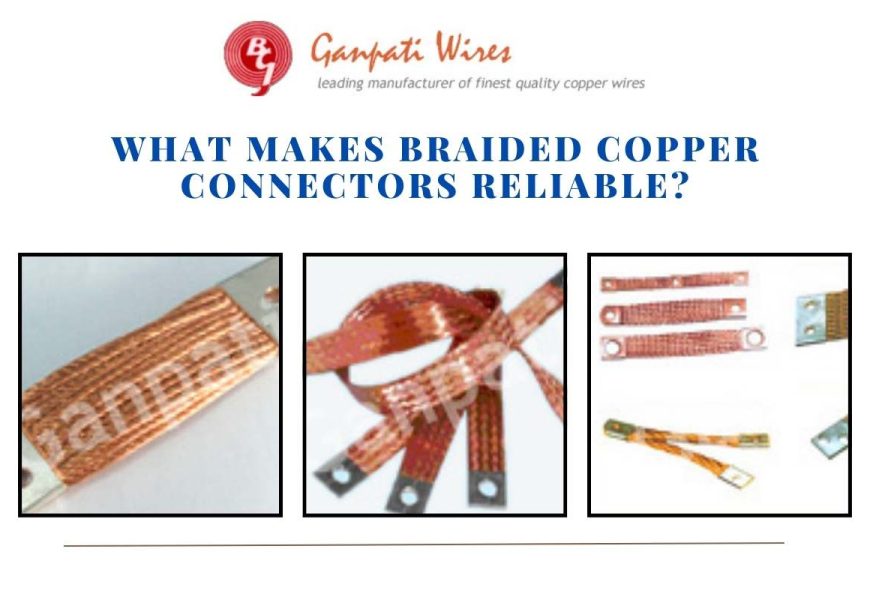Braided copper connectors are a versatile and reliable solution for a wide range of electrical applications. These flexible, high-performance connectors provide a secure and efficient electrical connection, ensuring smooth and uninterrupted power or signal flow across various systems. Trusted braided flexible connector manufacturers play a crucial role in delivering high-quality products that meet industry standards, ensuring durability and performance in demanding conditions. In this article, we will explore the factors that contribute to the reliability of braided copper connectors and why they are an essential component of modern electrical infrastructure.
Understanding the Importance of Reliability in Electrical Connections
Reliability is a critical aspect of electrical connections, as it directly impacts the performance, safety, and longevity of electrical systems. Unreliable connections can lead to power interruptions, equipment failures, and even safety hazards. By using braided copper connectors, you can ensure that your electrical systems operate with a high degree of consistency and dependability, minimizing the risk of costly downtime and potential disasters.
Benefits of Using Braided Copper Connectors
Braided copper connectors offer numerous advantages that make them a preferred choice for a wide range of applications:
Flexibility:
The braided design of these connectors allows for a high degree of flexibility. Enabling them to bend and conform to various configurations without compromising their integrity.
Durability:
Braided copper connectors withstand harsh environmental conditions, including exposure to moisture, chemicals, and extreme temperatures, ensuring long-lasting performance.
Corrosion Resistance:
The copper material used in these connectors is inherently resistant to corrosion, providing a reliable connection even in challenging environments.
High Conductivity:
Copper is an excellent conductor of electricity, ensuring efficient power or signal transmission through the connector.
Easy Installation:
Braided copper connectors are typically easy to install, reducing the time and effort required for electrical system setup and maintenance.
Manufacturing Process of Braided Flexible Copper Connectors
The manufacturing of braided flexible copper connectors involves a meticulous process to ensure the highest quality and reliability. This process typically includes the following steps:
Copper Wire Preparation:
High-purity copper wires are carefully selected and processed to meet the required specifications for conductivity, flexibility, and durability.
Braiding:
The copper wires are intricately braided or woven together to create a flexible, yet sturdy, connector.
Termination:
The ends of the braided connector are terminated with appropriate fittings or lugs, ensuring a secure and reliable connection.
Insulation and Coating:
Depending on the application, manufacturers may coat the braided connector with an insulating material or encase it in a protective sheath to enhance its performance and durability.
Quality Control:
Rigorous testing and inspection processes occur throughout the manufacturing stage to ensure the consistent quality and reliability of the final product.
Testing and Quality Control Measures for Braided Copper Connectors
Reputable manufacturers of braided copper connectors employ rigorous testing and quality control measures to ensure the reliability and performance of their products. These measures may include:
Electrical Testing:
Conductivity, resistance, and current-carrying capacity tests are conducted to verify the electrical performance of the connectors.
Mechanical Testing:
Tensile strength, flexibility, and vibration tests are performed to assess the mechanical durability of the connectors.
Environmental Testing:
Connectors undergo environmental stress tests, including temperature cycling, humidity exposure, and corrosion testing, to evaluate their resistance to various environmental conditions.
Visual Inspection:
Technicians perform detailed visual inspections to identify defects or irregularities in the braiding, terminations, and overall construction of the connectors.
Traceability:
Comprehensive record-keeping and traceability systems are in place to ensure the quality and consistency of each batch of braided copper connectors.
Maintenance and Care Tips for Braided Copper Connectors
To ensure the long-term reliability of your braided copper connectors, it is essential to follow proper maintenance and care practices:
- Regular Inspection: Periodically inspect the connectors for any signs of wear, damage, or corrosion, and address any issues promptly.
- Proper Cleaning: Clean the connectors using a mild, non-abrasive cleaner to remove any dirt, debris, or oxidation buildup.
- Lubrication: Apply a thin layer of approved lubricant to the connectors to maintain flexibility and prevent galling or binding.
- Proper Installation: Ensure that the connectors are installed correctly, with the appropriate torque and strain relief, to prevent any potential issues.
- Environmental Considerations: Protect the connectors from exposure to harsh environmental conditions, such as excessive heat, moisture, or chemicals, to extend their lifespan.
Conclusion
Braided copper connectors are a reliable and versatile solution for a wide range of electrical applications. Their robust construction, corrosion resistance, and flexibility make them an essential component in modern electrical infrastructure, ensuring the smooth and uninterrupted flow of power or signal. By understanding the factors that contribute to their reliability and choosing a reputable manufacturer. You can ensure that your electrical systems operate with a high degree of consistency and dependability, minimizing the risk of costly downtime and potential disasters.
To learn more about how braided copper connectors can enhance the reliability of your electrical systems, contact our team of experts today. We’ll work with you to find the right solution for your specific needs and ensure your electrical infrastructure operates at its best.









